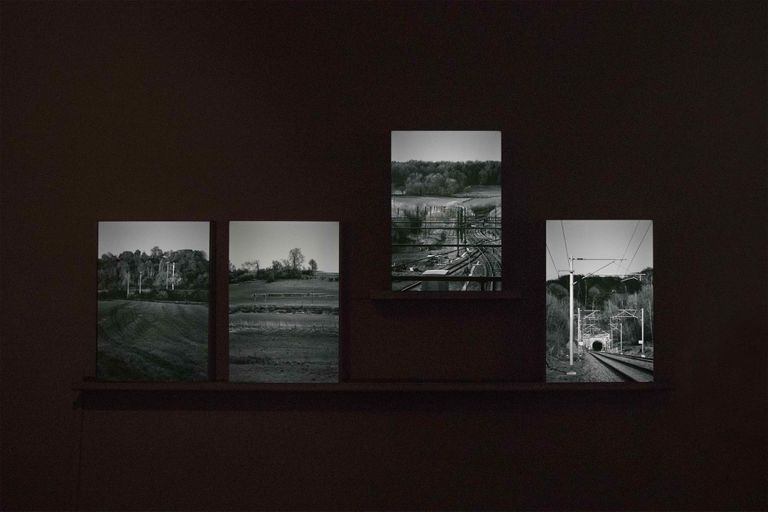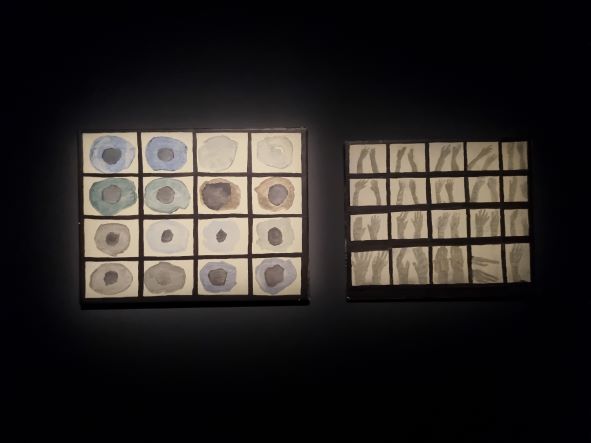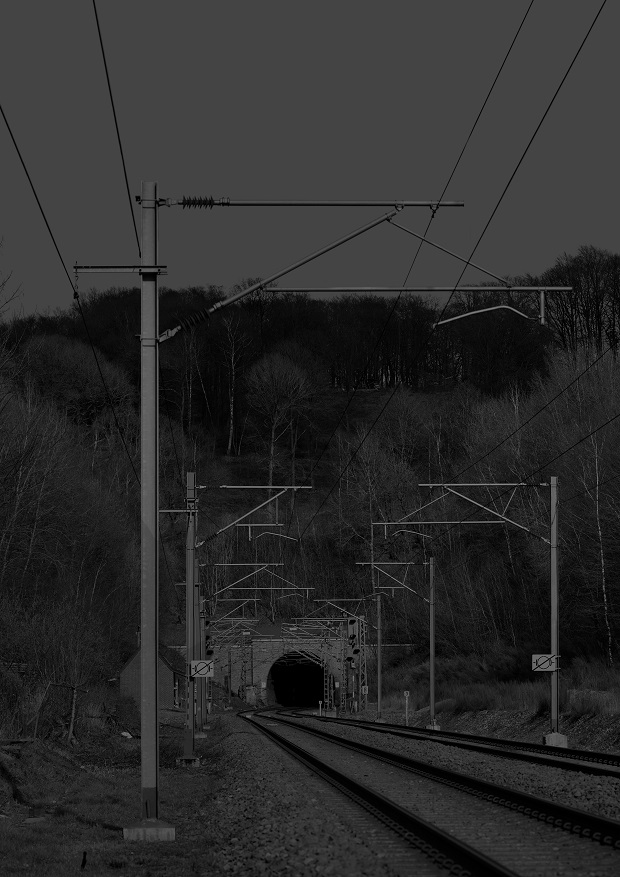- Daily & Weekly newsletters
- Buy & download The Bulletin
- Comment on our articles
Photo exhibition remembers heroic wartime escape from Auschwitz train
The 80th anniversary of the unique rescue of Jewish deportees in 1943 is honoured by photographer Jo Struyven in the exhibition 236 - Land(es)capes from the 20th convoy at the Jewish Museum of Belgium.
Showing until 14 August, the series of large-format photos captures unchanged landscapes from the rail route between Boortmeerbeek and the German border, where 236 people perilously leapt from guarded freight wagons.
Struyven scoured the 130km-long site to pinpoint the exact locations where they escaped after resistance efforts sabotaged the 20th convoy that had left Mechelen for the Nazi death camps.

In two darkened rooms, he presents back-lit images of rail tracks, sidings, disused tracks, unchanged buildings and a viaduct that portray an eerie world, positioned between life and death.
“I want to represent the oppression, as those people must have felt when they stood there,” says Struyven, whose childhood home in Sint-Truiden lay some 50m from the convoy’s route.
He only learned about the incident on meeting survivor Simon Gronowski a few years ago. “Since then, I have never stopped imagining the distress of the deportees.”
Three subsequent field trips to the site during the pandemic resulted in this bleak but mesmerising collection of works.

The small but emotionally-charged exhibition in the museum’s project space consists of 18 black-and-white and one colour photo. It also benefits from two paintings by internationally-acclaimed Belgian artist Luc Tuymans, who extensively explores our relationship with history in his work. Introduction panels and an illustrated map (complete with a QR code for the catalogue) provide the context for the images and show the train’s route in Belgium.
On the eve of the rescue’s 80th anniversary, this tribute is a contemporary memorial to a largely forgotten episode in Belgium’s WW2 history. In addition to paying testimony to the heroic resistance organisations and Jewish deportees, it raises the question of how visual arts can appropriately address the Holocaust.
The story of the 20th convoy
It was on 19 April 1943, that the 20th convoy left Kazerne Dossin – now a memorial museum – for its night-time journey to Auschwitz. The overcrowded and guarded train was transporting 1,631 Jewish men, women and children in enclosed freight wagons.
Between Boortmeerbeek and Haacht, three young members of the Belgian Resistance attacked the train, armed with a pistol, red paper and a lantern. They made a red light, a sign for danger ahead, forcing the train driver to brake sharply. One of them, Robert Maistreau, managed to prise open a wagon door and help 17 people escape. German soldiers guarding the train fired at them.

The train restarted but sometimes slowed down. In two of the wagons, Jewish resistance members were prepared to abet escapes; some of the deportees were equipped with tools to help them break out of the carriages.
Whenever the train slowed down and when the distance to the ground was not too high, other deportees risked the jump. Of the 236 who bravely made this bid for freedom, 26 died, 89 were recaptured and the remaining 118 managed to get away.
How Simon Gronowski survived
Among the escapees was 11-year-old Simon Gronowski. It was his mother who helped lower him out of the wagon door so that he could jump down. Despite the gunshot ringing out, he ran to the safety of nearby trees. After wandering through woods and countryside during the night, as dawn broke, he knocked on the door of a house in a village. Struyven’s photo of this still-standing, rather austere home is his only colour image; the light determining his aesthetic choice.
The woman who answered the door took him to the local police officer, who helped him return by train to Brussels, where his father lived. The pair were taken in and hidden by separate local families for the duration of the war. It was dangerous for everyone concerned: Belgians who failed to turn in Jews to the Gestapo risked their own lives.
Gronowski became a lawyer following university, had a family and enjoyed playing jazz in his spare time. After more than 50 years of not talking about his dramatic escape – his mother and sister both died at Auschwitz – he was finally persuaded to write a book and started speaking about his experience to schoolchildren.
His testimony plays a key role in the exhibition and the catalogue, providing a living link with the history of the deportation of Jews in Belgium and the Nazi-run extermination camps.
236 - Land(es)capes from the 20th convoy
Until 14 August
Jewish Museum of Belgium
Rue des Minimes 21
Brussels
Photos: Jo Struyven, Land(es)capes from the 20th Convoy, from the 20th convoy 2020-2022; Luc Tuymans, Die Wiedergutmachung, 1989 (private collection)

















